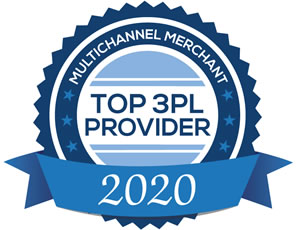
As new small business owners know too well, logistics can become overwhelming. But know two things: you can do it and your business will grow stronger for the experience.
Costs
At the beginning, everything seems to cost too much. On top of product development and e-commerce platform setup, website development, and marketing costs, the idea of paying a third-party fulfillment house is daunting. To complicate matters, it is difficult for warehouses to work with new companies because their order volume cannot be predicted and they often require special handling, consuming valuable resources. Sometimes inventory ends up stagnant in the warehouse, costing both the business and the fulfillment company and leaving no one happy.
Until your business is shipping orders on a regular basis, it is more cost effective to fulfill your own orders. You can make the finer decisions on product and shipping cost, making sure that you handle your new customers carefully and accommodate all of their needs. The flexibility of handling your own shipping cannot be matched. If you get an order at 4:00 in the afternoon, you could ship it the same day to make points with your new customers, but a fulfillment house cannot always flex to this degree with hundreds of packages and carrier pickups.
When your new manufacturer send a box without a packing slip, you know what's in it. But a fulfillment house might need to investigate and spend time figuring out the contents before receiving into inventory. Depending on the difficulty, this could incur a cost. You can smooth out these wrinkles before turning over your logistics to a third-party.
Time
It will take time to manage your own shipping. Most new business owners are juggling other jobs and commitments while trying to develop their enterprise, but the reward for making time is customer satisfaction and a stronger business. Plus, you'll be saving money that you can use towards marketing, so you grow and can afford to outsource.
Learning Curve
While you don't have to learn the ins and outs of every shipping carrier and every boxing situation, the experience of fulfilling your own orders will help you better understand the service you'll need later on. The reputation of your business is a primary concern, and only you are truly familiar with the sublteties of your product such as packaging, fragility, labeling, and condition.
If you pack your orders in-house at the beginning, you can see what works best in terms of box size and shipping filler. You will start to get a feel of the returns flow, so you can prepare for reverse logistics too.
Certain shipping costs and methods are more appropriate than others. You'll figure out which method has the best price and service for your particular target market. Consult with the major carriers and get an average price for shipping in the most common situations, then choose the best method for your needs. You can speak with a local sales representative and ask for their best discounts, establishing an account and a relationship for your business. Every year, negotiate for better rates based on your order volume. Sometimes you can get the shipping box included, as with USPS Priority Mail.
Once your business reaches double or triple digit order every month, it will be time to consider outsourcing your fulfillment. When volume gets to that point, you will benefit from 3PL services such as a warehouse with a loading dock, regular shipping carrier pickups, and staff to pull orders. Having the experience of packing orders yourself with leave you infinitely more prepared to transition to a third-party provider.
Outside Help
There are some ways to reduce your time and effort in the initial phases, while reaching a larger market.
Fulfillment by Amazon is very useful to increase exposure for your new business. The platform's reach cannot be compared to any other in the market today. To get your new product in front of a wide audience, using FBA allows you to sell on Amazon while taking advantage of the Prime shipping options. For the over 100 million Prime members, this is a distrinct advantage and help encourage trial.
For this service, you ship cases of product to the Amazon warehouses. The seller account resources walk you through the whole process, and there are chat and phone representatives available. Once they receive the product, they handle all of the shipping, payments and emails. There are drawbacks such as commissions and lack of marketing contact, but the reach makes this a no-brainer.
Some manufacturers offer drop-shipping services, so that they ship directly to your customer. This is another way to get started. Shopify also has an option to start a store completely as drop-ship, but this is for selling third-party products.
Depending on your market, there may be other avenues to explore. The priority in the beginning is making customer contacts and establishing brand identity, so it's acceptable to lose some margin on services like these until a more established pattern emerges.
The Future
As your business grows there will be many changes. If you are successful, it will come time to outsource your fulfillment to a third-party logistics provider (3PL). You'll find more resources about choosing a fulfillment provider in our blog.
Feel free to contact us any time with your questions or for a free evaluation.
To your success!
Business Tips and Industry News
For more news and tips on all things business and e-commerce, visit our e-zine. Our e-zine is also available as an rss feed.



